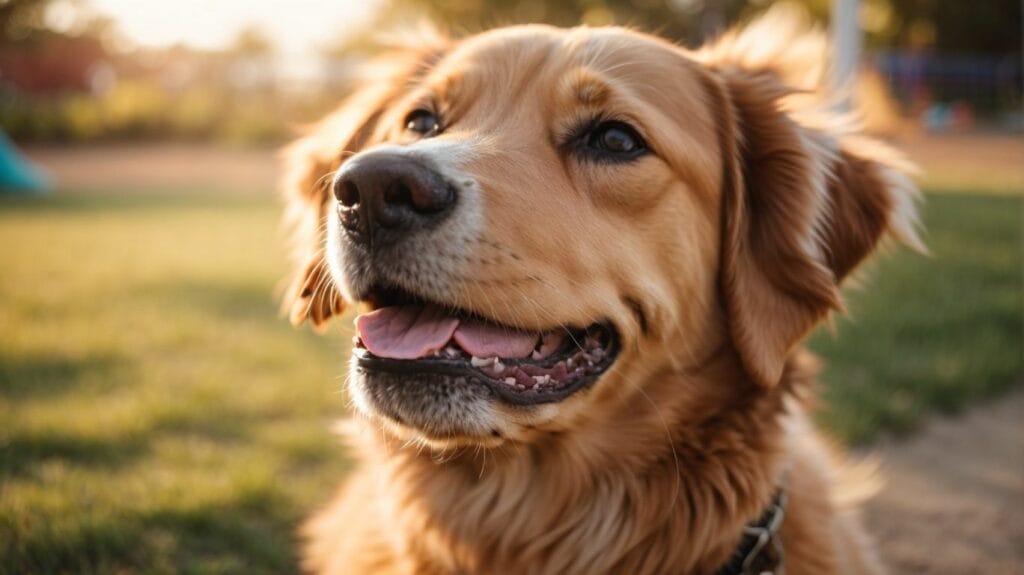Dogs have a unique dental structure that plays a crucial role in their overall health and well-being. Understanding their teeth structure and the process of tooth growth is essential for pet owners. In this informative article, we will explore the topic of whether dogs’ teeth grow back and provide insights into various aspects of canine dental health.
Firstly, we will delve into the teeth structure of dogs, highlighting the different types of teeth they possess. These teeth include incisors, canines, premolars, and molars, each serving a specific purpose in their oral function.
Next, we will address the main question of whether dogs’ teeth grow back. While humans experience two sets of teeth (baby teeth and permanent teeth), the same does not apply to dogs. Dogs typically have one set of permanent teeth that start developing as their baby teeth fall out. We will explore the timeline of when dogs start losing their baby teeth and the process of adult teeth formation.
When dogs lose their teeth, specific changes occur, leading to potential discomfort and shifts in behavior. We will discuss these changes, including teething discomfort, behavioral alterations, and the formation of adult teeth.
We will address the concern of whether dogs’ adult teeth grow back if they are lost or damaged. Understanding this aspect is important for dog owners to manage their pet’s dental health effectively.
In the event that your dog does lose a tooth, we will guide you on what to do next. Prompt action and appropriate dental care are crucial for your dog’s oral health.
Lastly, we will discuss essential measures to help maintain your dog’s dental health. Regular brushing, providing suitable chew toys, and scheduling routine dental check-ups are among the practices that can significantly contribute to your dog’s oral hygiene.
By the end of this article, you will have a comprehensive understanding of the growth and development of dogs’ teeth and the steps to ensure optimal dental health for your furry companion.
Key Takeaways:
- Dogs’ teeth do not grow back: Unlike humans, dogs’ adult teeth do not grow back if lost or damaged.
- Losing baby teeth is normal: Dogs start losing their baby teeth at around 3 to 8 months old, and their adult teeth replace them.
- Maintaining dental health is important: Regular dental care, including brushing, providing appropriate chew toys, and regular check-ups, is crucial for maintaining a dog’s dental health.
Understanding the Teeth Structure of Dogs
Understanding the teeth structure of dogs is imperative for their dental health and overall well-being. Dogs have a diverse array of teeth, including incisors, canines, premolars, and molars, each with its unique purpose. Incisors are employed for gripping, canines for tearing, and premolars and molars for chewing and grinding food. To prevent dental diseases and ensure healthy teeth for dogs, it is vital to provide them with proper dental care, such as regular brushing and professional cleanings. Familiarizing oneself with their teeth structure can aid in the early detection of any dental issues and facilitate the timely administration of appropriate treatment.
Do Dogs Teeth Grow Back?
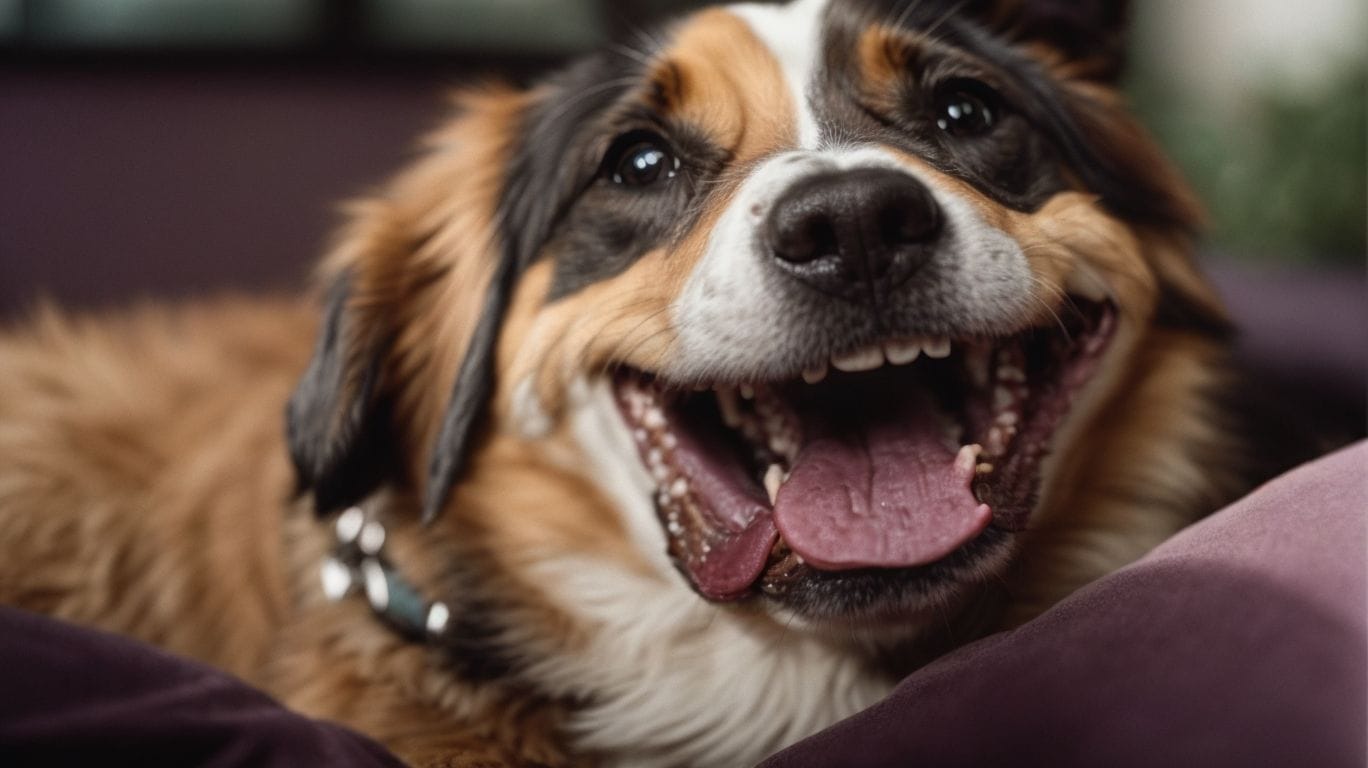
Photo Credits: Petnarnia.Com by Benjamin Hall
“No, dogs’ teeth do not grow back. Unlike humans, dogs have two sets of teeth in their lifetime: deciduous (baby) teeth and permanent teeth. Do Dogs Teeth Grow Back? The baby’s teeth start to fall out when the permanent teeth begin to erupt. Once the permanent teeth are in place, there are no more new teeth to replace them if they get damaged or lost. It is important to take care of dogs’ teeth by regularly brushing them and providing appropriate chew toys to prevent dental issues. If a dog loses a tooth, it will not grow back naturally.”
Types of Teeth in Dogs
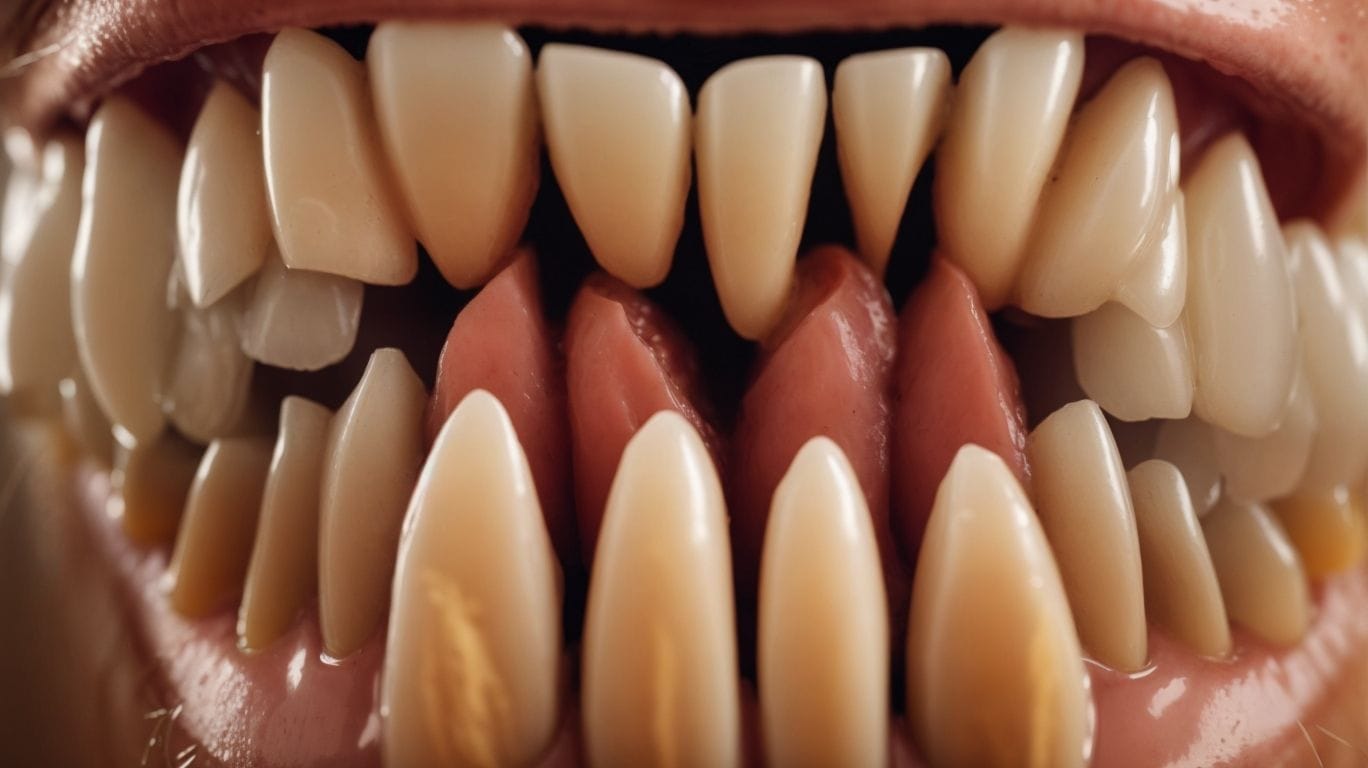
Photo Credits: Petnarnia.Com by Donald Jackson
Discover the fascinating world of a dog’s dental anatomy as we dive into the different types of teeth they have. From sharp incisors to powerful molars, we’ll explore the unique functions and characteristics of each tooth. Get ready to uncover how incisors aid in grooming, how canines serve as formidable weapons, and how premolars and molars play a crucial role in chewing and crushing. Join us for an exciting journey through the diverse teeth found in our furry friends!
Incisors
Incisors are the front teeth that dogs use for grasping food and grooming themselves. They are sharp and designed for biting and cutting. Here are some key points about incisors:
- Incisors are the smallest teeth in a dog’s mouth.
- They are located in the front of the mouth, both on the top and bottom jaw.
- Dogs have a total of 12 incisors, six on the top jaw and six on the bottom jaw.
- Incisors are usually the first teeth to erupt when puppies are around 3-4 weeks old.
- They are typically fully grown by the time a dog is around 8 weeks old.
I had a Labrador Retriever named Max who loved to play fetch. One day, while chasing after his favorite ball, he accidentally ran into a tree and broke one of his incisors. I immediately took him to the vet, where they determined that the tooth needed to be removed to prevent infection. Max recovered quickly and continued to enjoy his favorite game, but now with a slightly altered smile.
Canines
Canines play an essential role in a dog’s dental structure and function. Here are some important facts to know about canines:
- Canines are long, pointed teeth located on either side of the incisors.
- They are designed for gripping and tearing food, making them crucial for a dog’s chewing and feeding habits.
- Canines are typically larger and more prominent in adult dogs compared to puppies.
- They are one of the strongest teeth in a dog’s mouth, allowing them to exert force when needed.
- Proper care of canines involves regular brushing, providing appropriate chew toys, and scheduling regular dental check-ups.
By understanding the importance of canines and taking appropriate dental care measures, you can ensure your dog maintains healthy teeth and overall oral health.
Premolars
Premolars are an essential type of teeth in dogs, located behind the canines and in front of the molars. They are used for holding and tearing food, enabling dogs to chew and break down their meals efficiently. Dogs typically have a total of 10 premolars, with 4 premolars on each side of their upper jaw and 4 on each side of their lower jaw. These teeth have sharp, pointed cusps that aid in gripping and sharing food. Premolars play a crucial role in a dog’s dental structure and are vital for their overall oral health.
Molars
Molars are the large, flat teeth located at the back of a dog’s mouth. They are designed for grinding and crushing food. Dogs typically have three sets of molars on each side of their upper and lower jaw, totaling 12 molars in total. These teeth have multiple cusps or points that aid in breaking down tough food. Molars play a crucial role in a dog’s chewing and digestion process. Proper dental care, including regular brushing, can help maintain the health and hygiene of a dog’s molars, preventing dental issues such as tooth decay and gum disease.
When Do Dogs Start Losing Their Baby Teeth?

Photo Credits: Petnarnia.Com by Thomas Scott
When Do Dogs Start Losing Their Baby Teeth?
Dogs typically begin to lose their baby teeth around 3 to 6 months of age, depending on the breed. This is the time when their adult teeth start to emerge, causing the baby teeth to loosen and eventually fall out. It is crucial to closely monitor their dental development during this period to ensure everything is progressing as it should. Retained baby teeth can lead to complications with the alignment of the adult teeth. If your dog’s baby teeth do not fall out naturally or if you observe any abnormalities, it is advisable to seek guidance from a veterinarian for proper care and assistance.
What Happens When Dogs Lose Their Teeth?
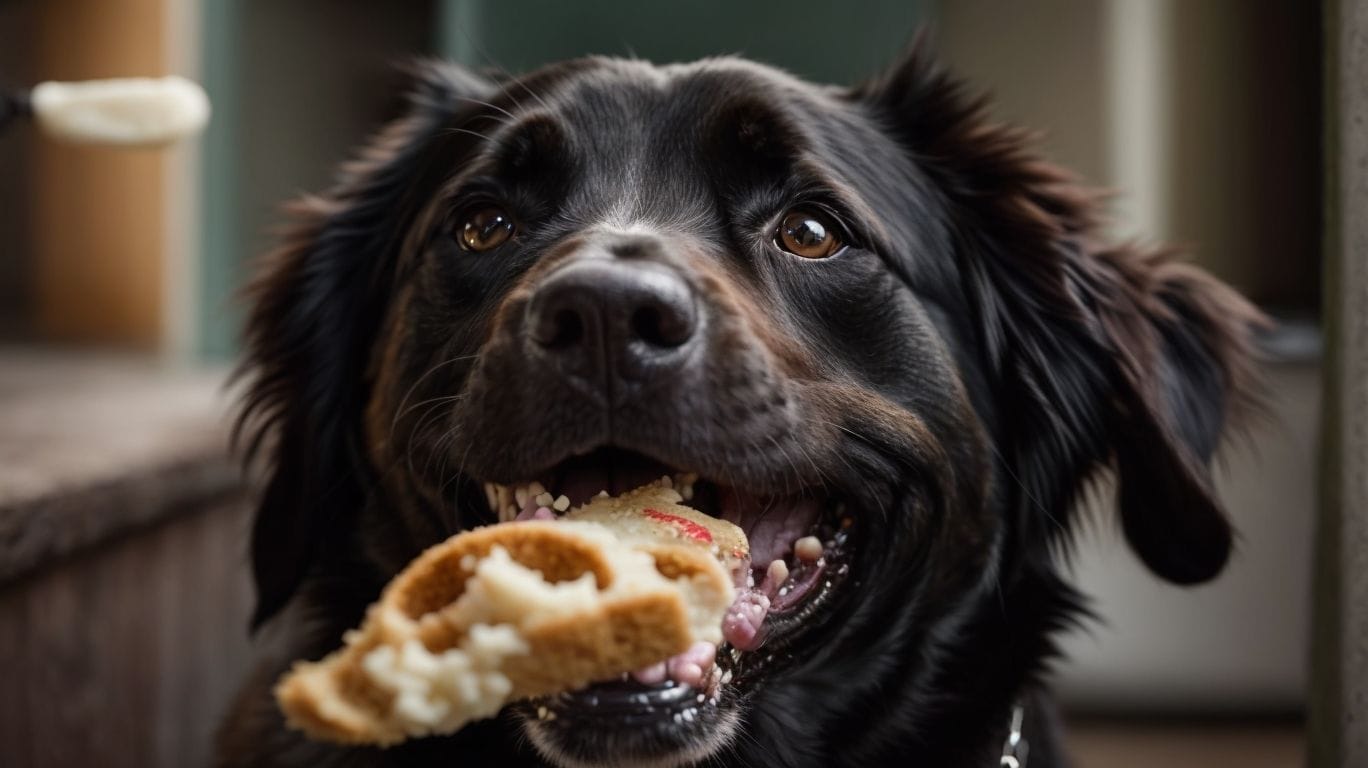
Photo Credits: Petnarnia.Com by Wayne SmithLosing teeth can be a rite of passage for our canine companions, but have you ever wondered what happens when dogs lose their teeth? In this section, we’ll dive into the intriguing world of canine dental development. From teething discomfort to changes in behavior and the fascinating process of adult tooth formation, we’ll explore the various aspects and effects of losing those pearly whites. So, get ready to discover the facts behind dogs and their teeth!
Teething Discomfort
Teething discomfort is a common issue that dogs experience when their puppy teeth are erupting, causing teething discomfort. This discomfort can be alleviated by following these steps:
1.
Provide appropriate chew toys: Offering chew toys specifically designed for teething dogs can help relieve their teething discomfort by providing something safe and satisfying to chew on.
2.
Use frozen treats: Putting wet washcloths or dog-safe frozen treats into the freezer and then giving them to your dog to chew on can help numb their gums and soothe their teething discomfort.
3.
Massage their gums: Gently massaging your dog’s gums with your fingers can help alleviate their teething discomfort and provide some relief.
4.
Offer soft foods: Feeding your dog soft or mushy foods during this time can make eating more comfortable for them, reducing their teething discomfort.
By following these steps, you can help your dog through the teething process and make them more comfortable during this stage, reducing their teething discomfort.
Changes in Behavior
Changes in behavior can manifest when dogs lose their teeth during the teething process. These alterations can range from mild unease to more notable shifts in behavior. Here are some illustrations:
| Teething Discomfort | Dogs may experience some discomfort and pain as their adult teeth come in, increasing chewing, drooling, and irritability. |
|---|---|
| Alterations in Chewing Habits | Dogs may display a stronger desire to chew on objects or may avoid chewing entirely due to the discomfort caused by teething. |
| Changes in Appetite | Some dogs may experience a decrease in appetite or demonstrate a reluctance to eat due to the discomfort in their mouth. |
| Behavioral Issues | The discomfort and pain associated with teething can lead to changes in behavior, including heightened aggression, irritability, or anxiety. |
| Increased Vocalization | Dogs may vocalize more frequently as a means to express their discomfort or frustration during the teething process. |
Formation of Adult Teeth
Several changes occur during the formation of adult teeth in dogs.
The process of forming adult teeth in dogs involves several important changes.
The process begins when the puppy’s baby teeth start to loosen and fall out, making way for the permanent adult teeth to emerge.
At the initial stage, the puppy’s baby teeth begin to loosen and fall out, creating space for the emergence of permanent adult teeth.
As the adult teeth come in, they push out the baby teeth and settle into their proper positions in the jaw.
Once the adult teeth start to emerge, they gently displace the baby teeth and align themselves correctly within the jaw.
This process typically takes place between 3 to 7 months of age.
Generally, the formation of adult teeth occurs during the period of 3 to 7 months of age.
It’s important to provide appropriate chew toys during this time to help ease teething discomfort and encourage healthy tooth development.
To alleviate teething discomfort and promote optimal tooth development, it is crucial to offer suitable chew toys during this stage.
Regular dental check-ups and brushing also play a vital role in maintaining your dog’s dental health.
Additionally, ensuring regular dental check-ups and practicing proper brushing techniques are essential for the overall dental well-being of your dog.
Will Dogs’ Adult Teeth Grow Back If Lost or Damaged?

Photo Credits: Petnarnia.Com by Albert Martin
No, dogs’ adult teeth will not grow back if lost or damaged. Unlike humans, dogs cannot regrow adult teeth. Once an adult tooth is lost, it is gone for good. Therefore, it is important to take good care of your dog’s teeth to prevent any damage or loss. Regular dental hygiene, such as brushing their teeth and providing appropriate chew toys, can help maintain the health of their teeth and prevent any dental issues in the future.
Dogs’ adult teeth will not grow back if lost or damaged. Will Dogs’ Adult Teeth Grow Back If Lost or Damaged? Unlike humans, dogs cannot regrow adult teeth. Once an adult tooth is lost, it is gone for good. Therefore, it is important to take good care of your dog’s teeth to prevent any damage or loss. Regular dental hygiene, such as brushing their teeth and providing appropriate chew toys, can help maintain the health of their teeth and prevent any dental issues in the future.
What Should I Do If My Dog Loses a Tooth?
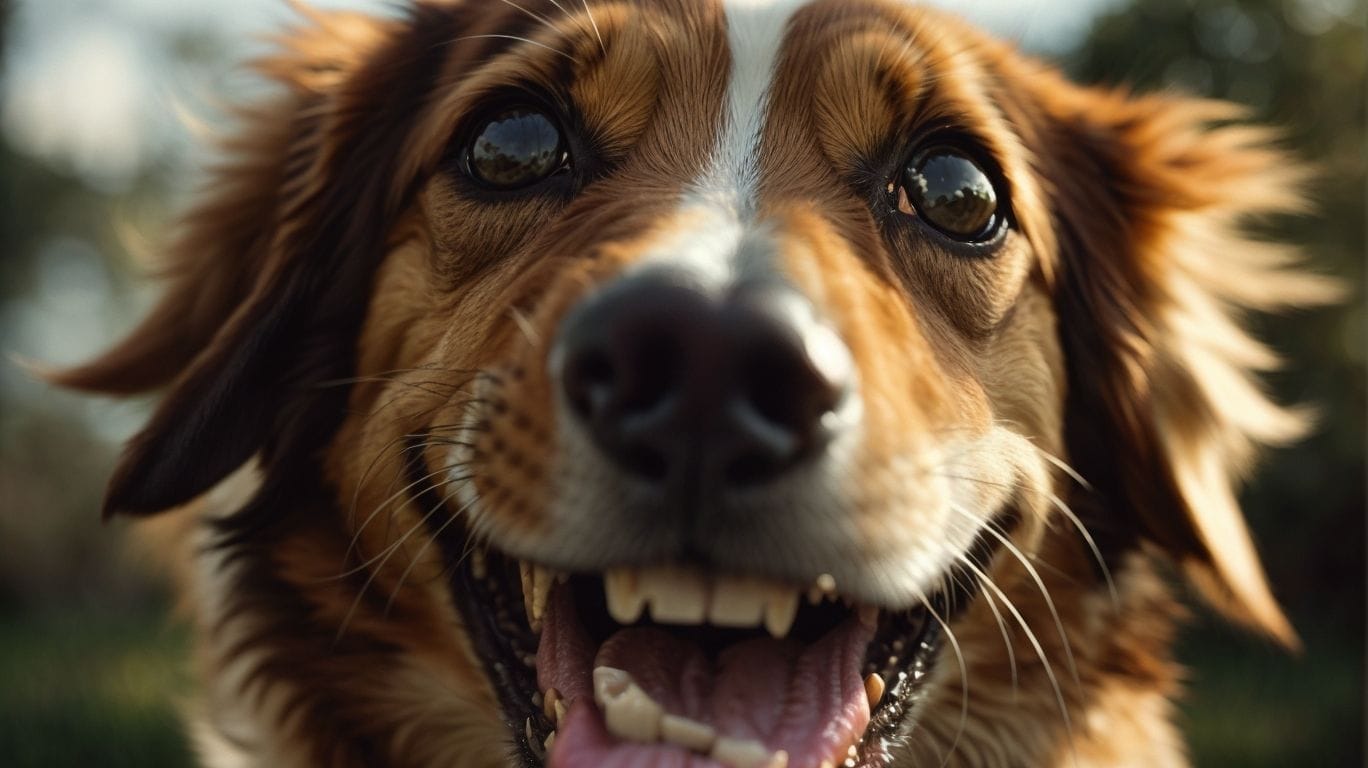
Photo Credits: Petnarnia.Com by Joseph Johnson
If your dog loses a tooth, you may be wondering, “What should I do if my dog loses a tooth?” There are certain steps you should take to ensure their health and well-being.
- Stay calm and assess the situation.
- Look for signs of pain or discomfort in your dog.
- Contact your veterinarian for advice and to schedule a dental exam.
- Follow any instructions given by your veterinarian, which may include administering pain medication or antibiotics.
- Monitor your dog‘s eating habits and make any necessary adjustments, such as providing soft or wet food.
- Please keep your dog‘s mouth clean by gently wiping their gums and teeth with a clean cloth.
- Avoid giving your dog hard toys or treats that could further damage their teeth.
- Continue regular dental care, including brushing your dog‘s teeth and scheduling professional cleanings as recommended by your veterinarian.
How Can I Help Maintain My Dog’s Dental Health?
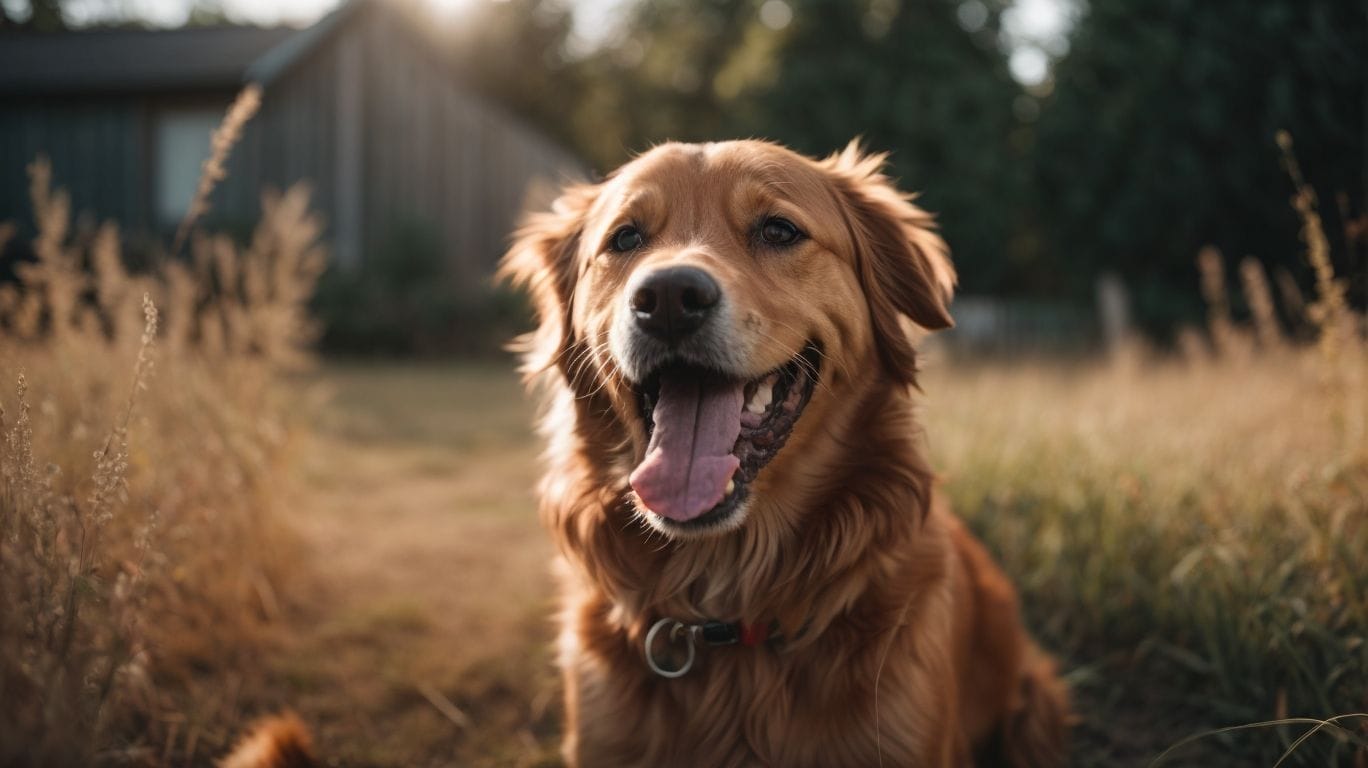
Photo Credits: Petnarnia.Com by James Flores
Want to keep your furry friend’s dental health in check? Discover simple yet effective solutions. We’ll explore how regular brushing, providing appropriate chew toys, and scheduling regular dental check-ups can contribute to your dog’s oral well-being. From preventing dental diseases to ensuring fresh breath, these practices will have your dog’s teeth gleaming and them smiling from ear to ear. So, let’s dive in and give your canine companion the dental care they deserve.
Regular Brushing
Regular brushing is essential for maintaining your dog’s dental health. Here are some steps to follow to incorporate regular brushing into your routine:
- Start early: Introduce regular brushing when your dog is young to get them accustomed to it.
- Use a dog toothbrush and toothpaste: Choose dental products specifically designed for dogs to ensure they are safe and effective.
- Be gentle: Gently brush your dog’s teeth in a circular motion, focusing on the outer surfaces.
- Brush regularly: Make it a habit to brush your dog’s teeth at least three times a week to prevent plaque and tartar buildup.
- Offer rewards: Create a positive experience by rewarding your dog with treats or praise during the brushing sessions.
By incorporating regular brushing into your dog’s dental care routine, you can effectively prevent dental issues and ensure the health of their teeth and gums. Don’t forget to consult your veterinarian for additional guidance and advice.
Providing Appropriate Chew Toys
Providing appropriate chew toys is crucial for maintaining your dog’s dental health. Chew toys play a vital role in keeping their teeth clean, minimizing plaque buildup, and offering mental stimulation. Here are a few suggestions to help you choose the right chew toys for your dog:
- Size and Texture: It is important to select chew toys that are suitable for your dog’s size and chewing habits. Avoid toys that are too hard or too small, as they can potentially harm their teeth.
- Dental Toys: Look for chew toys that are specifically designed to clean teeth and gums, such as dental sticks or toys with ridges and grooves.
- Natural Materials: Opt for chew toys made from natural materials like rubber or nylon, as they are safer for your dog to chew on.
- Variety: To prevent boredom and maintain your dog’s interest, provide a variety of chew toys. Rotate the toys to keep them engaged.
By providing appropriate chew toys, you can effectively support your dog’s dental health and ensure they have a happy and healthy smile.
Regular Dental Check-ups
Regular dental check-ups for dogs are crucial in maintaining their oral health. During these check-ups, a veterinarian will examine your dog’s teeth and gums, looking for any signs of infection, decay, or other dental issues. They may also perform professional cleanings to remove tartar buildup. Regular dental check-ups not only help prevent dental problems but also catch any issues early before they become more serious and costly to treat. Your veterinarian can provide advice on proper dental care at home, such as brushing your dog’s teeth regularly and providing appropriate chew toys. Taking your dog for regular dental check-ups ensures their teeth stay healthy and reduces the risk of dental diseases.
Facts:
Some Facts About “Do Dogs Teeth Grow Back?”:
- ✅ Puppies have two sets of teeth, puppy and adult. (Source: AKC)
- ✅ Puppy teeth appear at about three weeks old. (Source: AKC)
- ✅ At around four months of age, the 28 puppy teeth are replaced with 42 adult canine teeth, including molars. (Source: AKC)
- ✅ Adult teeth may come in behind the puppy teeth and push them out. (Source: AKC)
- ✅ Sometimes, a puppy tooth may stay in place even when the adult tooth fully emerges, requiring a visit to the vet for extraction. (Source: AKC)
